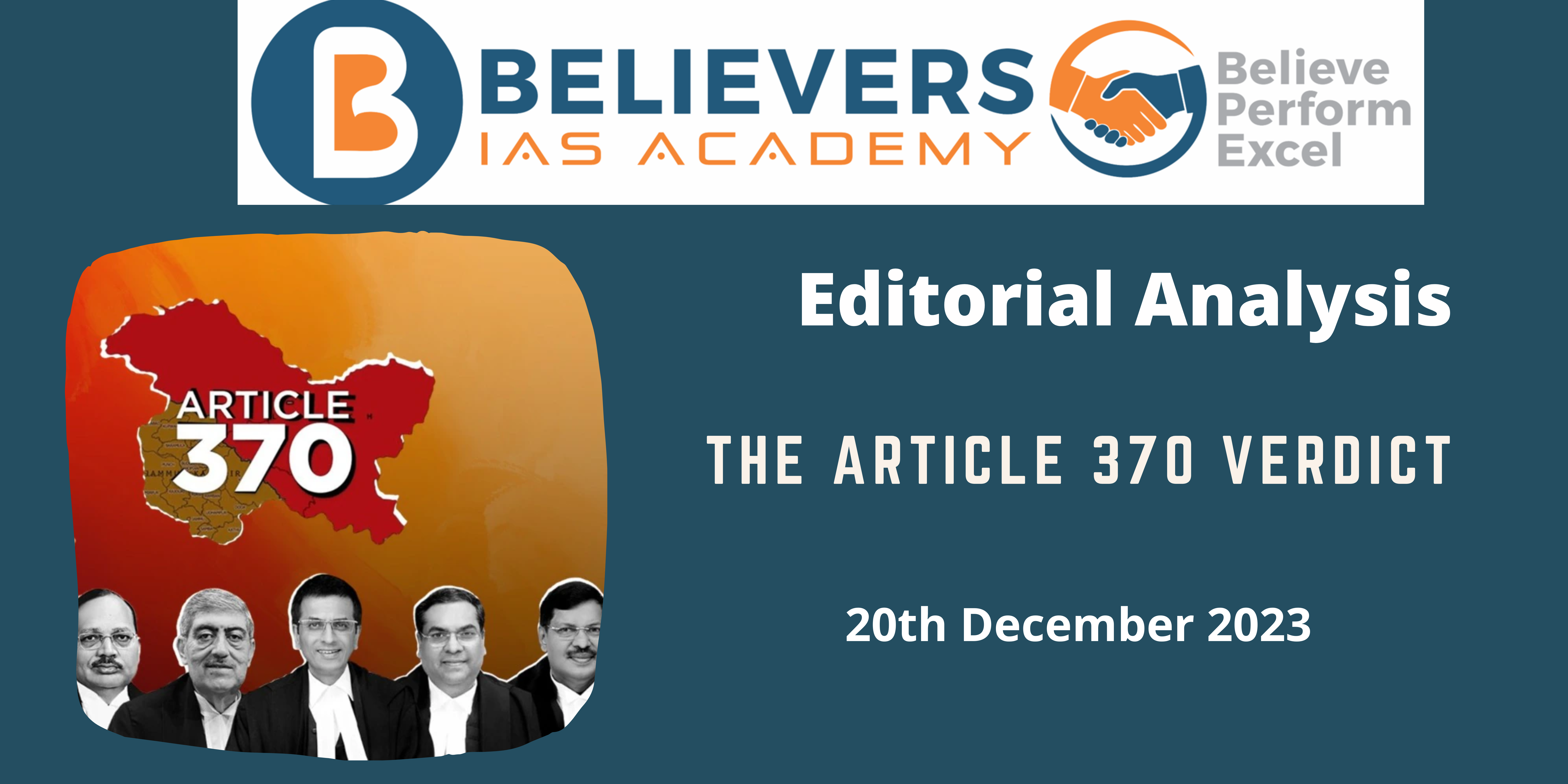The Article 370 verdict
Context:
The Supreme court recently gave a judgement on the abrogation of Article 370 and 35A. The Supreme Court observed that the decision taken on previously given presidential order on 5th August 2019 to abrogate Article 370 which ended the special status of the erstwhile state of J&K, was done to enhance constitutional integration.
Relevance:
GS-02 (Government policies and interventions)
Mains Question:
How does the Supreme Court’s judgment on the 2019 presidential orders affect Jammu and Kashmir, and Ladakh, and what does it signify concerning the court’s perspective on peace, security, and the democratic framework in India? (250 words)
Dimensions of the Article:
- Introduction to Article 370
- Constitutional Background
- Challenges and Amendments
- Current Status
Introduction to Article 370:
- Article 370, embedded in the Indian constitution, accorded special status to Jammu and Kashmir, a region embroiled in territorial disputes involving India, Pakistan, and China.
- Crafted by N Gopalaswami Ayyangar, a Constituent Assembly member, this provision was introduced as a ‘temporary’ measure in 1949.
- Under Article 370, the state had the authority to maintain its constitution, flag, and substantial autonomy in various domains, excluding defense, foreign affairs, and communications.
- Its foundation lay in the conditions outlined in the Instrument of Accession, signed by Jammu and Kashmir’s ruler, Hari Singh, in 1947, marking its integration into India following a Pakistani invasion.
Constitutional Background:
- Incorporated in Part XXI of the Constitution, titled Temporary, Transitional, and Special Provisions, Article 370 was initially envisaged as a temporary measure until the formulation and adoption of the state’s constitution. It limited the legislative powers of the Parliament concerning J&K.
- Leaders like Pandit Nehru and Home Minister Gulzari Lal Nanda acknowledged the gradual erosion of Article 370. The process commenced in 1950 with the Constitutional Application Order and progressed through the Delhi Agreement of 1952, applying various constitutional provisions to J&K.
- The Presidential Orders, executed under Article 370, dealt with crucial matters like Parliament’s jurisdiction, laws related to the state’s territory, constitutional protection for permanent residents, and more. These orders were vital instruments shaping the relationship between the Union and the state.
Challenges and Amendments:
- Over the years, the Constitutional Application Order underwent changes, notably in 1954 and eventually in 2019, with the issuance of the Constitution (Application to J&K) Order. Article 370 itself underwent amendments, reflecting evolving constitutional dynamics.
Current Status:
- The facts surrounding Article 370 reveal its historical evolution and eventual dilution with the recent judgement.
- However, the provision, initially conceived as temporary, witnessed modifications over seven decades, impacting the constitutional autonomy of J&K.
Conclusion:
Article 370, a constitutional cornerstone, played a pivotal role in defining the relationship between the Union and Jammu and Kashmir. Its journey, marked by erosion and amendments, reflects the complexities and transformations in India’s constitutional landscape.




